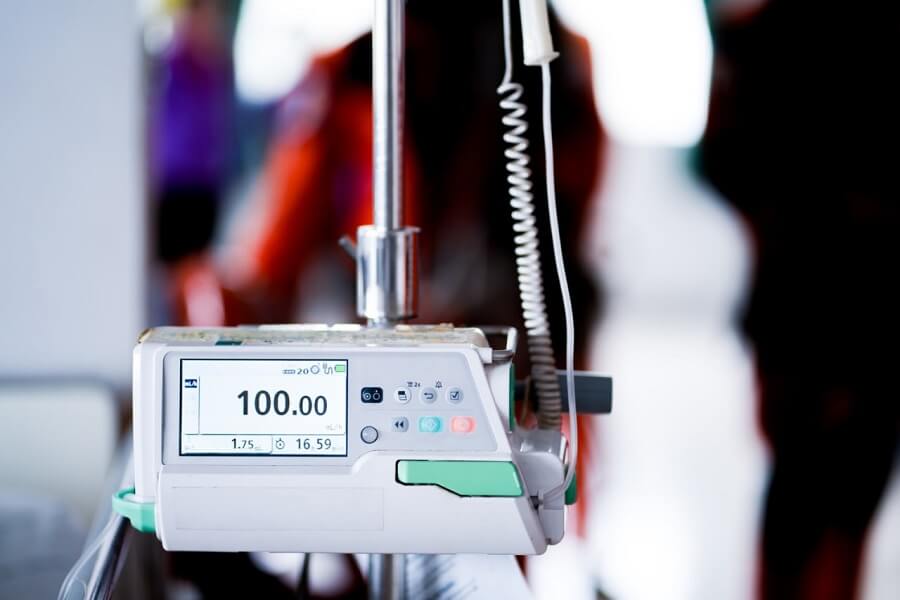Table of contents:
Buprenorphine (brand name Buprenex) is a semi-synthetic opioid that is derived from thebaine, a naturally-occurring alkaloid of the opium poppy. Buprenorphine is an opiate used to treat opioid use dependency and moderate to severe pain. Buprenorphine is taken by oral means, sniffed, or injected.
Buprenorphine is categorized as a Schedule III drug by the United States Drug Enforcement Agency. Its street names are Buse, Strips, Stops, Oranges, Sobos, and Sub. Buprenorphine is a US Food and Drug Administration (FDA) approved drug used to treat opioid dependence, also known as opiate use disorder, in a process known as medication-assisted treatment (MAT).
This article discusses detoxification and provides methods for buprenorphine detox.

What is Buprenorphine Detoxification
Buprenorphine is a partial opioid agonist, and this means that instead of activating opioid receptors to the same extent as full agonists (such as oxycodone, heroin, or methadone), they block opioid receptors, preventing other opioids from attaching to those receptors. Quitting buprenorphine too abruptly can cause withdrawal symptoms. When buprenorphine cleansing starts, a route of management is initiated, which evaluates the severity of drug use and general health. Using the facts given, the team of experts will decide the best treatment choice. Any underlying health problems or mental health issues previous to treatment are given due consideration.
Buprenorphine detoxification is a gradual process in which drug users deliberately overcome their dependence and are free from buprenorphine abuse. Buprenorphine addiction is dangerous because even the most important relationships, jobs, and hopes can be destroyed. The body becomes dependent on the effects of the drug and physically "needs" it to continue to function.
In detoxification, the dose of the drug is gradually reduced, allowing the body to detoxify completely without withdrawal symptoms.
Buprenorphine Detox Protocol
Due to the opioid effects of buprenorphine, people without opioid dependence are susceptible to abuse of the drug. Therefore, you may be required to get into the buprenorphine detox program if you have developed a dependence on the drug.
In a rapid detox protocol, the patient is sedated, and the dose of buprenorphine is gradually reduced. The ultra-rapid detox is performed using general anesthesia and opiate blockers, which allows you to get clean quickly without feeling anything. You will be placed in a medically-induced sleep state.
Indications for the Procedure
Detoxification is indicated for patients who are physically and mentally dependent on buprenorphine. Detox is the starting point of a rehabilitation program and the beginning of a new clean life.
Contraindications
Contraindications are severe respiratory, renal, or hepatic dysfunction.
Rapid and Ultra-Rapid Buprenorphine Detoxification Techniques
Mental health experts use rapid or ultra-rapid detox procedures to make the process easy.
With rapid detoxification, withdrawal symptoms are minimized with sedatives. The process of ultra-rapid detoxification involves the administration of an anesthetic that puts the patient to sleep for several hours or a day. During this period, medications, intravenous fluids, and nutrients are introduced. The medication administered allows drug antagonists to remove buprenorphine from the body. Upon waking up, the body is no longer dependent on these chemicals or metabolites, because it has eliminated them. After the procedure, the recovery stage will begin under the direct supervision of a physician.
Details of the drug-dependent person's vital signs, well-being, and mental status are carefully monitored while undergoing this process.
On subsequent days, the patient sleeps more often. Ultra-rapid buprenorphine detox does a remarkable job of making the method of detoxification much easier for drug users.
Buprenorphine Detox Process
Detoxification is a gradual reduction in the use of buprenorphine until it is completely discontinued. This process is done by gradually reducing the dose until the body is completely free of the drug. During this procedure, medications are given to relieve withdrawal symptoms. Mental illness must be treated, along with substance abuse and addiction, to give the best chance of a full recovery. Most people benefit from combination therapy with prescription drugs (if needed), therapy, and lifestyle changes.
Preparing the Patient for Buprenorphine Detoxification
The extent and length of buprenorphine cleansing vary from person to person, and slight withdrawal symptoms may persist for several weeks after the detox plan is completed. Consultation with a certified detox professional or clinician is the most critical step in deciding on the precise program. A treatment plan will help you categorize your options to find the program that best suits your specific needs.
Is it Safe To Detox At Home
Home detox can be dangerous because some withdrawal symptoms require medical attention. It is also hard and painful without special medications to relieve withdrawal symptoms. The clinical support team facilitates relief from buprenorphine detoxification symptoms and regularly monitors the affected person's health.
Buprenorphine Detox Time
The timing of detoxification depends on the severity of the abuse and the method chosen. For modern rapid techniques, the process can take up to several days, while a regular detox can last several weeks.
Buprenorphine Detoxification Symptoms
Buprenorphine causes most of the physical symptoms common to opiate withdrawal. These include restlessness, chills, goosebumps, muscle aches, nausea or vomiting, restlessness, runny nose, stomach cramps or diarrhea, sweating, shaking or twitching, and watery eyes. The psychological challenges associated with withdrawal are usually not due to withdrawal itself. Withdrawal can result in the return of mental health problems that were silenced with the help of drug use, such as anxiety and depression.
Benefits of Rapid Buprenorphine Detox
Rapid buprenorphine detox is utilized when a short time is required for the cleansing process, or in situations that require hastened detoxification. Some of these programs complete the detox in three days or less and use techniques such as general anesthesia to calm a withdrawn patient.
Rapid detox is recommended as a quick fix for addiction, providing the opportunity for quick and painless detox.
Addiction Treatment After the Detox Process
Buprenorphine detoxification is only the first step to quitting addiction and overcoming the body's physical dependence on buprenorphine. Psychological dependence can persist for months or years after detoxification, so follow-up programs are an important part of relapse prevention.
Work with a doctor, counselor, or physical therapist to develop new approaches to managing pain during and after withdrawal. Practice relaxation techniques (meditation, listening to music) to help you manage anxiety and excitement. Try light to moderate exercise to manage anxiety.
Patents and Certificates
The best acute care at VipVorobjev Clinic helps us stand out among other facilities. We are DAACC (Drug, Alcohol, and Addiction Counselor Certified). Our certified and registered addiction specialists will help you begin a new life without addiction.
The Cost of a Buprenorphine Detox
The cost of detoxification depends on several factors. Outpatient treatment is usually cheaper than inpatient treatment, but inpatient treatment may be more effective for some people.
Doctors
It doesn't matter what level of addiction you're struggling with; we have experts to help you recover safely and successfully. Our addiction specialists use only the best buprenorphine detox treatments.

